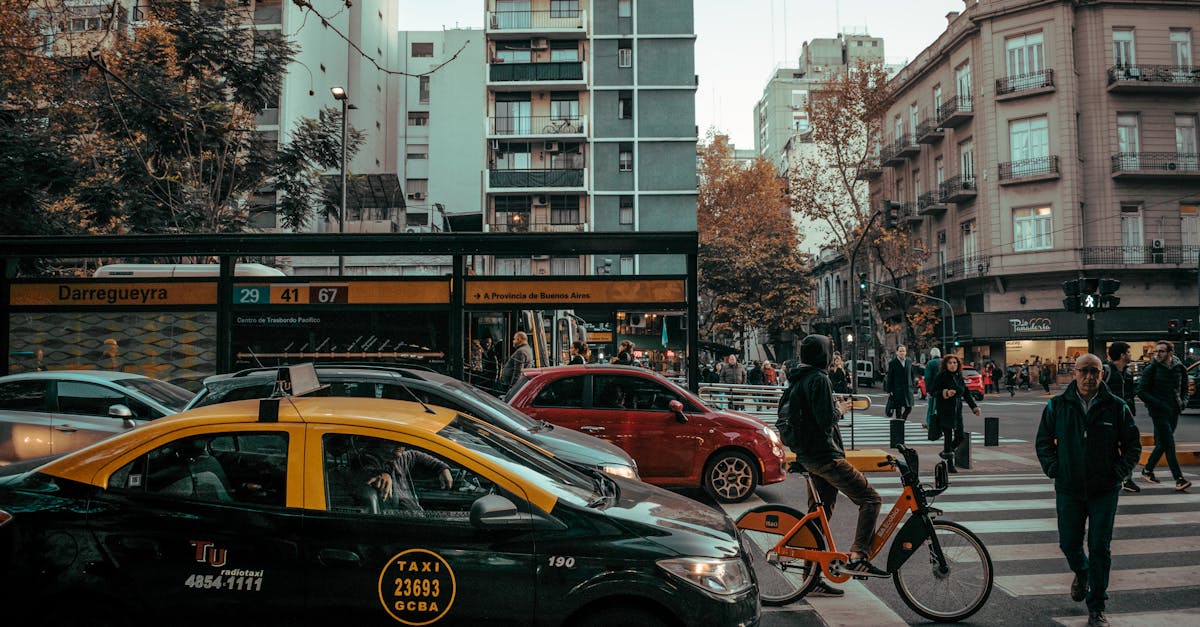
Introduction
Urban transportation is on the brink of a remarkable transformation as innovative technologies like robotaxis and air taxis become a reality. These futuristic transportation modes promise to revolutionize the way we navigate cities, providing efficient and sustainable solutions for commuters. Imagine a city where autonomous vehicles whisk passengers to their destinations with precision and ease, all while air taxis soar above congested streets. With advancements in artificial intelligence, sensor technologies, and battery capabilities, these transportation methods are set to alleviate urban congestion and offer unparalleled convenience. As we embrace this evolution, it’s essential to consider the impacts on urban industries and infrastructure. This article delves into how robotaxis and air taxis are changing the landscape of urban mobility.
The Rise of Robotaxis
Robotaxis, essentially self-driving taxis, are becoming an increasingly viable alternative to conventional urban transport. Leveraging sophisticated artificial intelligence (AI) algorithms, these vehicles can navigate bustling city streets, detect obstacles, and optimize routes, all without human intervention. Companies like Waymo and Tesla lead the charge in deploying fleets of autonomous taxis, aiming to reduce traffic congestion and provide a seamless travel experience. As these vehicles become widespread, they promise to revolutionize public transit by offering urban dwellers a cost-effective and eco-friendly transport option. Nevertheless, their success hinges on refining AI systems and regulatory support to ensure safety and operational efficiency.
Advantages of Robotaxi Technology
The deployment of robotaxis offers numerous advantages to urban environments. Firstly, it reduces dependence on traditional car ownership, leading to fewer cars on the roads and consequently decreasing traffic congestion. Additionally, moving towards electric robotaxis contributes significantly to lowering urban pollution levels. As the AI systems in robotaxis improve over time, they can adapt to real-time traffic situations, making journeys faster and more efficient. Moreover, these vehicles can operate 24/7, ensuring round-the-clock accessibility for city dwellers. With these benefits in tow, urban areas will be able to achieve not only transportation convenience but also overall city planning sustainability.
Challenges and Considerations for Robotaxis
Despite the promising benefits, the implementation of robotaxis faces several challenges. Technical hitches, such as AI's decision-making in complex traffic scenarios and integration with existing traffic systems, can hinder smooth operations. Furthermore, legal and regulatory hurdles must be surmounted as authorities craft policies to ensure the vehicles' safe deployment. Public trust and acceptance are also crucial for widespread adoption, necessitating transparent communication about safety and reliability. Lastly, potential job displacement for taxi drivers requires strategizing on workforce adaptation, ushering in discussions on reskilling and future employment opportunities.
The Advent of Air Taxis
While robotaxis transform city streets, the skies are set to be revolutionized by air taxis. These Vertical Take-Off and Landing (VTOL) aircraft offer a speedy and flexible transportation option for urbanites. Operated either autonomously or with pilots, air taxis can journey over gridlocked traffic, drastically reducing commute times. Companies like Uber and Airbus are actively testing these aerial solutions, viewing them as the future of personal and business travel. Developed to fly short distances within metropolitan areas, air taxis promise to make urban transport as simple and fast as a few taps on a smartphone app.
Technological Innovations in Air Taxis
The operational viability of air taxis hinges on futuristics technologies. Powered by electric or hybrid batteries, these vehicles aim to minimize environmental impact, while integrating advanced flight control systems and robust sensor arrays ensures flight safety. Many air taxi designs feature compact and lightweight structures to optimize aerodynamics and fuel efficiency. However, the key to their success lies in developing strong charging infrastructure and air traffic management systems to accommodate increased aerial traffic. As technology continues to progress, air taxis may become everyday aspects of urban environments.
Integrating Air Taxis into Urban Landscapes
Seamless integration of air taxis into city landscapes introduces a unique set of challenges. Establishing designated take-off and landing pads—vertiports—requires careful urban planning, while ensuring minimal noise pollution presents further design considerations. Collaborating closely with urban planners, government entities, and regulatory bodies is essential to develop a cohesive urban air mobility framework. Moreover, establishing affordable pricing models to make air taxi services accessible to diverse socio-economic groups is critical in promoting inclusive transportation solutions. Thoughtful planning is vital to ensure that air taxis augment, rather than disrupt, existing urban systems.
Safety and Regulatory Frameworks
Ensuring the safety of passenger and systems is paramount as both robotaxis and air taxis become integral components of urban transportation. Standard-setting organizations must collaborate globally to develop stringent safety standards, rigorous testing protocols, and certification procedures. Regulatory bodies must draft comprehensive rules for traffic management concerning robotaxis and air taxis. Furthermore, public awareness campaigns can foster public confidence by educating individuals about the technologies’ safety features, benefits, and operational capabilities. This regulatory shield ensures seamless interaction between innovative transport modes and traditional infrastructure.
Impact on Urban Industries and Infrastructure
The widespread adoption of robotaxis and air taxis will significantly affect various urban industries and infrastructure. Parking facilities may become less crucial as ownership trends shift and on-demand transportation gains popularity, leading to a reevaluation of land use. Additionally, reduced traffic congestion may lower demand for extensive road expansions, allowing for more green spaces and pedestrian areas. On a broader scale, the transportation revolution encourages innovation and collaboration within autonomous systems, AI technology, and urban planning sectors. Such transformations redefine urban infrastructure and businesses as we know them.
Conclusion
The emergence of robotaxis and air taxis heralds an exciting era for urban transportation, offering a powerful glimpse into a sustainable future. These innovations promise to ease congestion, decrease emissions, and make urban commutes more efficient and enjoyable. However, realizing their potential demands overcoming technical, regulatory, and societal barriers. By meticulously addressing safety protocols and regulatory frameworks, cities can facilitate smooth integration. The transformation of urban transportation extends beyond technology, reshaping urban landscapes and society's relationship with mobility. As we embrace these changes, we pave the way for smarter, greener cities for future generations.